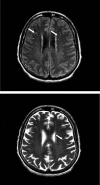Epidemiology, treatment, and prevention of human T-cell leukemia virus type 1-associated diseases
- PMID: 20610824
- PMCID: PMC2901658
- DOI: 10.1128/CMR.00063-09
Epidemiology, treatment, and prevention of human T-cell leukemia virus type 1-associated diseases
Abstract
Human T-cell leukemia virus type 1 (HTLV-1), the first human retrovirus to be discovered, is present in diverse regions of the world, where its infection is usually neglected in health care settings and by public health authorities. Since it is usually asymptomatic in the beginning of the infection and disease typically manifests later in life, silent transmission occurs, which is associated with sexual relations, breastfeeding, and blood transfusions. There are no prospects of vaccines, and screening of blood banks and in prenatal care settings is not universal. Therefore, its transmission is active in many areas such as parts of Africa, South and Central America, the Caribbean region, Asia, and Melanesia. It causes serious diseases in humans, including adult T-cell leukemia/lymphoma (ATL) and an incapacitating neurological disease (HTLV-associated myelopathy/tropical spastic paraparesis [HAM/TSP]) besides other afflictions such as uveitis, rheumatic syndromes, and predisposition to helminthic and bacterial infections, among others. These diseases are not curable as yet, and current treatments as well as new perspectives are discussed in the present review.
Figures



References
-
- Andrade, D. O. 2005. Somatosensitive and motor evoked potentials in HTLV-I associated myelopathy. Arq. Neuropsiquiatr. 63:652-655. - PubMed
-
- Araujo, A. Q. C., and M. T. T. Silva. 2006. The HTLV-1 neurological complex. Lancet Neurol. 5:1068-1076. - PubMed
-
- Bangham, C. R. M., and M. Osame. 2005. Cellular immune response to HTLV-1. Oncogene 24:6035-6046. - PubMed
-
- Bastian, I., Y. Hinuma, and R. R. Doherty. 1993. HTLV-I among Northern Territory Aborigines. Med. J. Aust. 159:12-16. - PubMed
-
- Biggar, R. J., J. Ng, N. Kim, M. Hisada, H. C. Li, B. Cranston, B. Hanchard, and E. M. Maloney. 2006. Human leukocyte antigen concordance and the transmission risk via breast-feeding of human T cell lymphotropic virus type I. J. Infect. Dis. 193:277-282. - PubMed
Publication types
MeSH terms
LinkOut - more resources
Full Text Sources
Other Literature Sources
Miscellaneous

